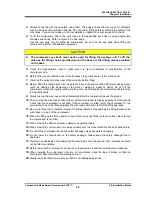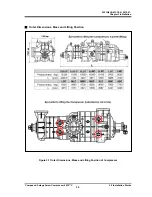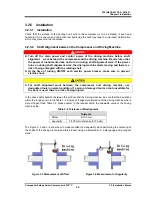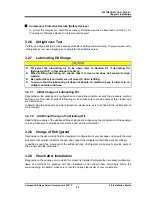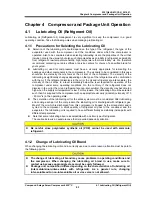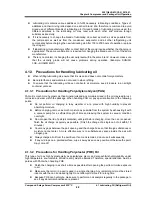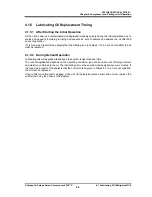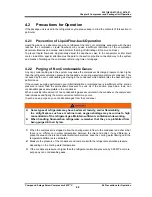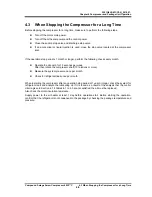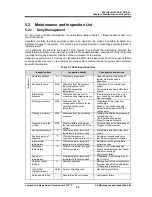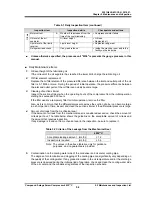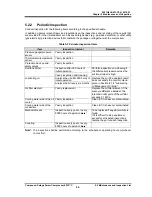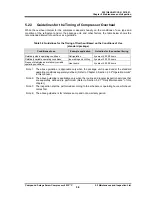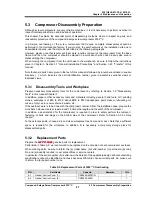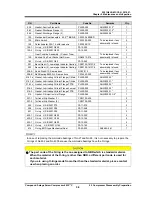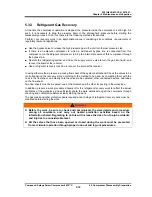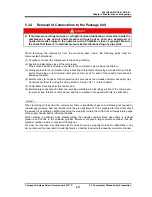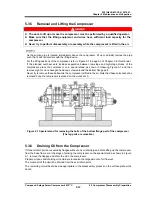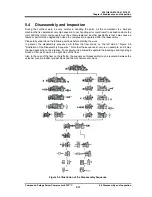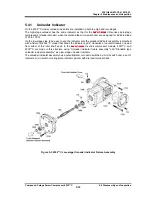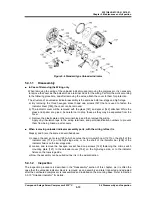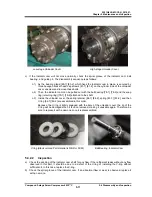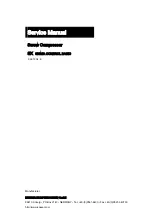
2201Q4JE-MY-C9-N_2018.01.
Chapter 5 Maintenance and Inspection
Compound 2-stage Screw Compressor 4032**C
5.2 Maintenance and Inspection List
5-3
5.2
Maintenance and Inspection List
5.2.1
Daily Management
For the purpose of daily maintenance, check the items listed in Table 5-1 "Daily Inspection Item" and
record the results.
Regularly recording the daily operational data in an operation log makes it possible to detect any
significant change in the system. This practice is particularly effective in preventing possible failures of
the compressor.
It is particularly important to keep track of the records that indicate the relationship between the
temperature and pressure, as it is closely related to the evaporation and condensation of the refrigerant,
in quickly finding any abnormal condition of the compressor or the system.
Keeping an operation log in this way can facilitate the efforts to properly track down the cause of failure
or accident that may occur in the compressor or the system, making it easier to quickly and accurately
deal with the situation.
Table 5-1 Daily Inspection Item
Inspection item
Inspection details
Checkpoints and actions
Co
mpre
ss
o
r
Hours of operation
hr
Total hours of operation
Used to determine the timing of
regular maintenance and
inspection
Suction pressure
MPa
Difference from the pressure
that corresponds to the
specified evaporation
temperature
Cleanliness of the cooling pipe
surface
Temperature and flow of the items
cooled
Intermediate
pressure
MPa
Difference from the normal
pressure during rated operation
If the pressure is too high (or too
low), check the conditions of the
high/low-stages.
Discharge pressure
MPa
Difference from the
condensation pressure for the
specified cooling water
temperature
Cleanliness of the condenser
cooling pipe
Mixing of non-condensing gas
Amount and temperature of the
cooling water
Oil supply pressure
MPa
Difference from the discharge
pressure
Whether the differential pressure is
decreasing or not
Liquid flow-back operation
Wear of compressor parts
Pressure loss of the
oil filter
MPa
Pressure difference between
the inlet and outlet ports of the
oil filter
Contamination of the lubricating oil
Clogged oil filter element
Suction temperature
°C
Whether upper or lower limit
temperature is not exceeded
Temperature and flow of the items
cooled
Suction degree of
superheat
°C
Whether the degree of
superheat is appropriate or not
Adjustment of expansion valve
Insufficient refrigerant circulation
Intermediate
temperature
°C
Whether upper or lower limit
temperature is not exceeded
Adjustment of the intermediate
expansion valve
Discharge
temperature
°C
Whether it is within the upper
limit temperature
Mixing of non-condensing gas
Supply oil temperature, insufficient
amount of oil supply
Compressor failure
Supply oil
temperature
°C
Whether upper or lower limit
temperature is not exceeded
Cleanliness of the cooling pipe of
the oil cooler
Capacity control
loading
%
Normally operation
Damaged coil of the solenoid valve
Improper manual valve adjustment
of the solenoid assembly
Leak at the
mechanical seal
mL/hr
Amount of leak per hour
Mechanical seal failure
Noise and vibration
-
Abnormal noise or vibration
Compressor failure

